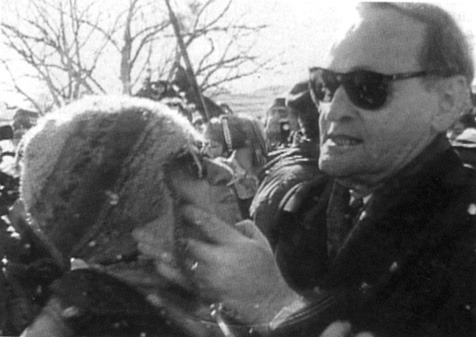 Image by mattjiggins via Flickr
Image by mattjiggins via FlickrOf the several ways that Jack Layton is very truly Ed Broadbent's heir, one of the most obvious is that he is personally much more popular than his party. One wonders if this is not a prerequisite for leading the NDP (or, thinking of Carole James, Darrell Dexter and Bob Rae, among others I should say a prerequisite for leading the federal NDP). One almost wonders if people don't compensate for not supporting the NDP by tossing their leader a few bones.
The extent, though, is almost comical. Angus Reid does this kind of stuff best. In addition to simple 'approval/disapproval' questions, they also ask what characteristics best describe the four main pary leaders (Elizabeth May is not included, for one reason or another). On this particular front, Layton has always performed well, but Angus Reid has new numbers and they're even better than usual. I thought it would be interesting to quantify just how well.
A random example of these numbers might be 'open' (as opposed to 'secretive'). Harper, Duceppe and Ignatieff are seen as 'open' by 8%, 9% and 10% respectively of the public polled by Angus Reid. Layton, on the other hand, is seen as 'open' by fully 29% of the public. 29% is not a stellar number, but it's more than the other three combined. You might not believe that that was a random selection, but let me put it this way: of the nine positive traits on Angus Reid's poll (down-to-earth, open, efficient, compassionate, honest, strong, exciting, in-touch, and intelligent), Layton scores better than the other three on every one except 'efficient' and 'strong' (in both cases, he comes second behind Harper). Of the nine negatives, primarily opposites to the positives (arrogant, secretive, inefficient, uncaring, dishonest, weak, boring, out-of-touch, foolish), Layton gets the best scores (obviously, the lowest percentages in these cases) on every one except 'weak', where he is beaten by both Harper and Duceppe.
Putting these numbers into action, I decided to add together the 'negative trait' values of each of the leaders and then the 'positive trait' totals. The numbers are interesting.
Stephen Harper's total negative-characteristic score is 258. That means that the total of the percentages of people who attributed each of those nine negative values listed above to Harper is 258 - his number is highest, which doesn't mean he's the least-liked leader, merely the one the most people have an opinion on. Ignatieff comes next with 245, quite near to Harper. Duceppe's negative values total 178, though I should mention that Angus Reid only asks about Duceppe in Québec. Nationwide this number would presumably be higher. Jack Layton leads the pack with 121, which is less than half of Harper and Ignatieff's numbers.
Looking at those nine positive traits, Ignatieff can muster only a meagre 82 points across them. Considering that that's the total of nine different percentages, that's a lousy number. 'Intelligent' is the only thing that a decent number of Canadians have positive to say about Ignatieff, and even at that Harper and Layton beat him (Ignatieff's numbers are bottom of the pack in every other positive trait: only one in fifty Canadians, for example, describes him as 'exciting'). Duceppe gets an also-weak total of 105. Harper may have the largest negative total, but his positive total is high too - 146 points, reflecting again the fact that more people have opinions about him (one way or another) than the other three. Still though, Layton pulls far ahead with 215 points. The average Canadian can find almost three good things to say about Layton for every one good thing they can find to say about Ignatieff.
If you subtract the negative totals from the positive totals, the results are striking: Ignatieff fails miserably, with a total of -163. Harper does only a little better, with -112. Duceppe remains in the negative, with -73, but Layton not only has a net positive rating, but quite a decent one: +94. That's an amazing difference, really. By this particular measure, Layton is head-and-shoulders above the competition.
It's arguable how much that actually means: Ipsos Reid also has numbers out that show Harper leading the competition on the question of 'who would make the best prime minister': 43% say Harper, 33% say Layton and 24% say Ignatieff. It's tough to be sure how to analyse that, except to say that Canadians like Layton more than they actually want him to be prime minister. That's an awkward position for Layton to be in, but all in all these polls clearly look good for him. Especially if he ignores polls that discuss voting intent.





















